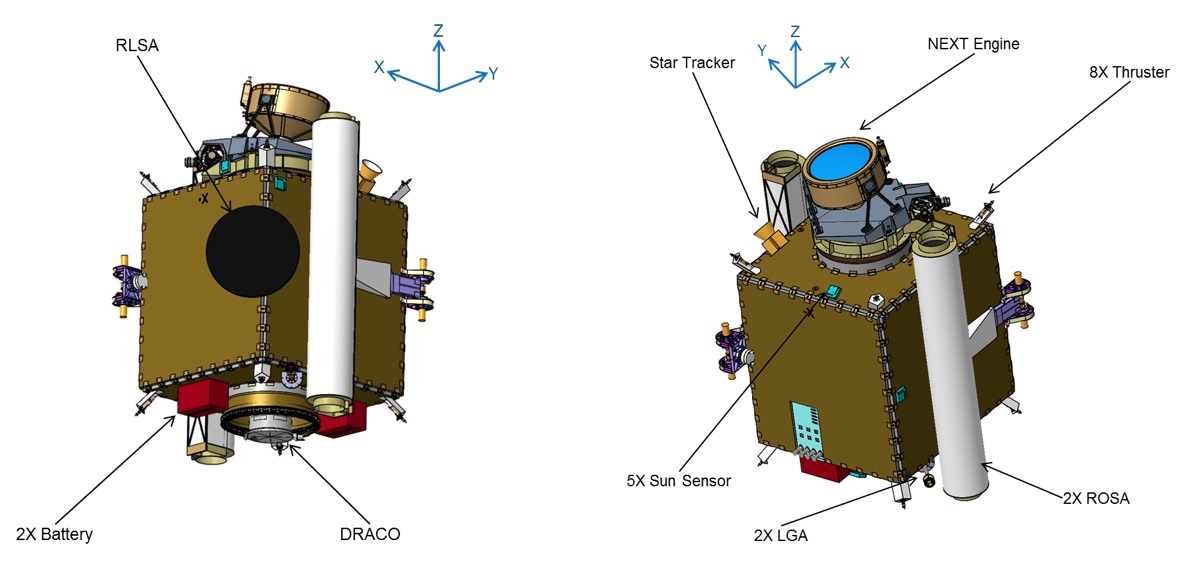NASA launches Spacecraft on a 'Suicide Mission' to Kick Asteroid Off Course

NASA had been working on its Double Asteroids Redirection Test or DART project and set to turn Hollywood storytellers’ imaginative plans of saving the planet earth into a tangible reality.
On November 24, 2021, NASA launched its first spacecraft under the DART project from Vandenberg Space Force Base, to smash into an asteroid. If all goes as planned, the spacecraft shall be able to put the asteroid off course, providing a substantially successful result for the first of kind mission.
The target that DART is being thrown at is a minor planet moon Dimorphos, a small asteroid (525 feet or 160 meters) of the size of a football field.
DART spacecraft weighs 610 kg and it is equipped with a 20 cm aperture star tracker camera. The project costs around $330 million, and the probe was solely built to be destroyed; hence it does not carry any high-tech scientific equipment.
The probe is programmed to make an impact at speed of 6.6 km/s. Add 500 kg mass of the probe into the equation such collision can produce a high change in the velocity that would be able to produce a very small change in the trajectory of the asteroid. However, in long run, such a small change in the trajectory can lead to putting the asteroid totally off course. So far it is uncertain to accurately predict that how much of a change in the trajectory the probe can produce upon impact and what new course the asteroid shall take after the impact.
 A concept image of the DART spacecraft, a boxy, ion-engined kinetic impactor with roll-out solar panels. (Image Credit: NASA)
A concept image of the DART spacecraft, a boxy, ion-engined kinetic impactor with roll-out solar panels. (Image Credit: NASA)
The deliberate collision of space probe into wandering asteroid shall set the asteroid off its course changing its trajectory. According to mission official Nancy Chabot of Johns Hopkins Applied Physics Laboratory, “This isn't going to destroy the asteroid. It's just going to give it a small nudge.”
The success of this test run will ensure that humanity stands a better chance of surviving an asteroid collision than our predecessor, Dinosaurs.
Although DART is mainly a NASA project, several other space tech companies and laboratories came together to contribute to making the project into a testable reality. SpaceX Falcon 9 rocket has been tasked with carrying the probe into outer space and maneuvering it into the course of hitting the asteroid. Apart from SpaceX, John Hopkins Applied Physics Laboratories (APL) provided technical support. Several international contributors also played their part in the making of DART, including the European Space Agency (ESA), the Italian Space Agency (ASI), and the Japanese Space Agency (JAXA Japan). After being launched, the DART spacecraft is expected to complete its journey and hit the target on September 26, 2022.
Initially, the European Space Agency and NASA started working on their independent asteroid prevention programs. However, in 2015, the two agencies came together for collaboration under the Asteroid Impact & Deflection Assessment (AIDA) program.
DART probe was originally planned to be launched along with a commercial payload in 2018. But the plan later changed and allowed NASA to contract SpaceX with a dedicated launch operation for DART.
NASA officials and spokesperson confirmed that currently there is no threat of an asteroid collision to earth and the asteroid that is being targeted with the probe is not on course towards the planet earth, it poses no threat whatsoever. The probe collision test is a routine test that is on time as scheduled long ago and the asteroid was chosen for the test after thoroughly studying and predicting its trajectory.
There are more than ten thousand known near-earth asteroids following their trajectories. However, to a pleasant relief, none of them has a chance to hit our planet in the next 100 years. According to scientists, an asteroid that is at least bigger than 100 meters in diameter can pose a real threat to our planet upon impact. Anything less than that can be dissolved into the thin air upon entering the earth atmosphere due to atmospheric friction. Scientists have been working on testing miniature model scales in the laboratories to test the probe impact and the thrust it can produce to put an asteroid off course. But none of the scaled model tests can provide with substantial data DART project can produce. The asteroid which is to be hit with the DART spacecraft can provide the best results because earth-based telescopes can measure the brightness of impact and easily predict the trajectory after impact to measure the results.
Regions
Issues

























